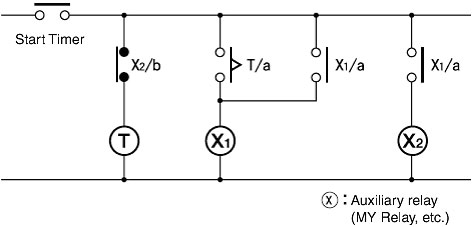Is it possible for a Timer to continuously apply power?
Yes it is, but do not leave the Timer in a time-expired condition for long periods of time (e.g., a month or longer) under high-temperature conditions.
Doing so may reduce the life of the Timer due to deterioration of internal parts, such as electrolytic capacitors.
If the Timer is to be left in a timed-out status for extended periods of tie, use together with Relays in the following type of circuit.

(Written using JIS notation)
